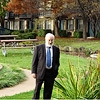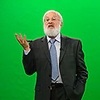

The Book of Zohar – Selections, Chapter “Tetzaveh (Command),” Item 116
Download: WMV Video|MP3 Audio
Writings of Rabash, Shlavei HaSulam, Article “Ancestral Merit”
Download: WMV Video|MP3 Audio
 Our entire work amounts to making the shift from perceiving reality inside egoistic senses to perceiving reality inside altruistic senses. This is the whole difference between perceiving this world and perceiving the Upper World. It is the difference between our current perception of reality (where we are living a lie, far away from the Creator, without knowing where we exist) and the understanding, perception, and knowledge of where we exist, or rather, inside Whom and with Whom we exist.
Our entire work amounts to making the shift from perceiving reality inside egoistic senses to perceiving reality inside altruistic senses. This is the whole difference between perceiving this world and perceiving the Upper World. It is the difference between our current perception of reality (where we are living a lie, far away from the Creator, without knowing where we exist) and the understanding, perception, and knowledge of where we exist, or rather, inside Whom and with Whom we exist.
The switch in perception happens by virtue of a person’s effort. There must first be a desire to change one’s perception; this will occur only if we desire it. That is why we have to strive to imagine a higher reality and to create its image in ourselves according to how Kabbalah Books tell us to, as well as to build such relationships between us in the group.
Then when we read about this higher reality during our studies, we will demand for a force to come from Above and open these senses, to unlock the locks on our perception, to allow us to reveal where we truly exist, instead of remaining in this deceptive, imaginary, made-up picture, which is presented to us today in our clouded senses. Therefore, our whole work lies in finding the right definitions, which are called the true reality.
Each of us should use all his strength, to the extent that it is possible, to try to imagine and depict a higher image where we are all united in our desires together with the Creator, and there is no difference between us. There, the Creator (the quality of bestowal and mutual love) dwells among us, within us.
In reality there is nothing except this state. There are no imaginary pictures. We should ask this reality to affect us and to be embodied in us. This should be the result of our efforts. This is what a person should aspire to constantly while reading The Zohar and other Kabbalistic books. This is also the reason why these books tell us about the true reality. Otherwise, we could read other books, written in a different style, or there would be no sense reading them at all.
Thus, when we read about the Upper Reality in these books, we should try to attain it. As Baal HaSulam writes in Item 155 of “Introduction to The Study of the Ten Sefirot“: “…through the yearning and the great desire to understand what they are learning, they awaken upon themselves the Lights that surround their souls.” The Lights come to us from the single state that exists, and in this manner we correct ourselves.
From the 1st part of the Daily Kabbalah Lesson 6/3/10, The Zohar
Related Material:
Laitman.com Post: Do Not Miss Our Train!
Laitman.com Post: A Game: Stepping Into The Unknown
Kabbalah Moments: “Transforming Myself”
 A question I received: When evil prevails and everything looks gloomy, where do we find strength to ask the Creator for help?
A question I received: When evil prevails and everything looks gloomy, where do we find strength to ask the Creator for help?
My Answer: Even if a person finds strength within himself to surmount a “downfall,” it will be an egoistic achievement. It won’t help his correction. Overcoming and advancement are possible only through the power that comes from the group.
You fell because the Creator gave you an additional desire which triggered a bigger connection with other souls. A bigger desire is not added into your “point in the heart,” but rather through its revelation as the wrong connection with other souls. You sense that you made one more step forward, but at the same time you know that it’s false and you have to correct it.
Correction is only possible under the condition that you are willing to be inspired by the group, acknowledge the benevolence brought about by unity, and ask the Upper Force to connect you with others. Only under these conditions will your correction be in the right place.
From the 4th part of the Daily Kabbalah Lesson 6/1/10, Writings of Rabash
Related Materials:
Laitman.com Post: Up And Down, From Summit To Summit
Laitman.com Post: Acquiring The Forces That I Lack
Kabbalah Moments: “Group and Light”
 A question I received: What are the three lines?
A question I received: What are the three lines?
My Answer: The left line is the uncorrected desire that must first be restricted (Tzimtzum Aleph). The right line is the force of bestowal, the force of Light. And the middle line is the result of the work of combining them, connecting the two lines.
Our entire work lies in the middle line, and all of Kabbalah’s materials speak of this. The right and left lines are given to us from Above, from nature or the Creator. If we don’t work in the middle line, we remain as animals, acting by compulsion of these two reins: the right and the left lines. However, when we receive the first spark from the middle line, called the point in the heart, it is an opportunity, an invitation, to gain control over our lives, and to stop moving like a horse, maneuvered by two reins from above.
We need to assume these reins and to become “human.” The point in the heart is the beginning of the human within us that will rein his animal, and move toward similarity to the Creator. The spiritual work consists solely of driving oneself, from within the point in the heart, toward merging with everybody else.
Then we relate to all our qualities as conditions given us from Above. We no longer identify ourselves either with our body and its inherent qualities, or with the Light, given to us to correct this body. That is, we relate to these two lines, the right and the left, as perfection created by the Creator, as an invitation extended from Him to begin to build ourselves.
I no longer worry, rejoice, or get distressed over the left or the right lines, instead I relate to the states given to me as an opportunity to properly combine these two lines and move forward, driving my animal and aiming it straight to the goal.
At every moment my animal throws itself this way or that, in a direction unknown to me. And I have to imagine the goal to myself: the Creator, merging with Him, and being equal to Him in properties as much as I can imagine it to myself. I have to try see my environment as a perfect, balanced system, linked and interconnected with all parts equal and in mutual guarantee, so as to be filled by the Upper Light.
Having clarified the goal, I have to correct my animal, so as to guide it in the proper direction via the two reins. This work does not stop for even a second. Every time I imagine the spiritual goal more clearly and in greater detail, and, accordingly, in greater confusion, for light is known only from darkness. I have to always strive toward this goal, that is, to plant myself in the general system as its inseparable component.
Therefore, when I read The Zohar I need to act like a car driver, pushing the gas pedal, watching the road, steering the wheel, and feeling the brakes, all at the same time.
Similarly, when I listen to what The Zohar speaks of, I want to imagine all of it before me. As though being on a tour, I try to move along with The Zohar and participate in it.
In other words, I want to know what it is that I study, to connect to this material, to be in this process. To know is to merge, as it is written: “And Adam knew Eve (his corrected desire).”
From the 1st part of the Daily Kabbalah Lesson 6/1/10, The Zohar
Related Materials:
Laitman.com Post: Persistence Is The Guarantee For Success
Laitman.com Post: Make A Template For The Light
5 Minutes of Light: “3 Lines In the Inner Work”
 A question I received: How is it possible that someone could use Kabbalah and the Torah egoistically? Can someone who doesn’t possess a spiritual screen and the force of bestowal draw the force of the Upper Light for his own sake? Isn’t there is a whole system of worlds and restrictions to prevent us from receiving the Light egoistically?
A question I received: How is it possible that someone could use Kabbalah and the Torah egoistically? Can someone who doesn’t possess a spiritual screen and the force of bestowal draw the force of the Upper Light for his own sake? Isn’t there is a whole system of worlds and restrictions to prevent us from receiving the Light egoistically?
My Answer: If you pick up the Torah and wish to receive power from it, you will get it since you are reading the primary source related to the spiritual world. It was written by a person who was in the process of attaining the Upper World. If you use it individually, in order to fill your egoism, for the sake of your own purposes, then you are using only a miniscule amount of the force it contains.
Even still, we do see how much more egoistical it makes people when the place of the “mistress” is taken by the “handmaid.” A person not only doesn’t receive correction from it, he becomes even worse! He thinks that now he owns this world and the future one, and that he deserves a reward; he feels proud before others and considers himself a chosen one, who is above them.
It is the Torah who is doing this to him; it becomes a deadly narcotic for such person. If, however, he wishes to use the Torah correctly, he does so in the group that builds itself as a common soul, as it is written about when receiving the Torah: as one man with one heart. This is the kind of engagement the Torah is given for; otherwise, as we are warned: in it there will be the place of your (spiritual) death!
From the 2nd part of the Daily Kabbalah Lesson 6/3/10, “Preface to the Sulam Commentary”
Related Material:
Laitman.com Post: Will You Use Kabbalah As A Potion Of Death Or Elixir Of Life?
Laitman.com Post: The Art And Science Of Spiritual Healing
Kabbalah Moments: “True Torah”
 Baal HaSulam writes in the Introduction to the Study of the Ten Sefirot that if a person is engaged in the Torah (and Kabbalah) for the sake of some reward for his egoism, then it is like “a maid who inherits the mistress.” What does this mean?
Baal HaSulam writes in the Introduction to the Study of the Ten Sefirot that if a person is engaged in the Torah (and Kabbalah) for the sake of some reward for his egoism, then it is like “a maid who inherits the mistress.” What does this mean?
There is an opportunity to draw the Surrounding Light upon oneself through engaging in the Torah. But its impact could be two-fold, depending on my intention. Instead of correction, it can make me even worse—“a handmaid who inherits her mistress.” Instead of ascending and becoming similar to the Creator, the quality of bestowal, I submerge myself deeper and deeper in egoism and love for myself.
Why are we given these opportunities? Isn’t it enough to simply study Kabbalah or the Torah? It isn’t enough to simply study; the intention defines what will become of a person. And it is the most important. It is here where the freedom of choice lies—where to switch myself under the influence of the Upper Force: downward, to the reception, toward my egoism, or upward, toward bestowal, toward the Creator?
The Torah itself (the Upper Light) is neutral—it can be either the elixir of life or the potion of death (a person doesn’t perceive that he is spiritually dead). As you decide and choose—so it will be!
It all depends on my attitude to the Upper Force—as with, for instance, the force of electricity: It can heat, and it can cool. The choice is mine. You can study Kabbalah (the Torah in general) only if from the very beginning you establish an objective to attain bestowal (Lishma). Otherwise, you should not even open the book. Naturally, everybody starts this studying egoistically (Lo Lishma), but we don’t have another choice; we were born in this egoism. Yet, we must be clear that we desire to attain bestowal. The Torah is given to us solely for this purpose: “I created the evil inclination and handed down the Torah for its correction.”
This is what we must teach first of all. This is the prime directive in the upbringing of a person: in kindergarten, school, and society. He has to understand that he is growing up in order to unite with all the others as equals, in absolutely mutual bestowal. And when, gradually, his desires become disclosed, he has to start learning Kabbalah in order for him to learn how to correct his egoistical intentions into altruistic ones. This is called to come from Lo Lishma to Lishma.
This concerns adults and children alike. Primarily, we must explain to a person that Kabbalah and the Torah are handed to us solely to change our nature. There isn’t any other purpose! Otherwise, a person will only increase his egoism with its help, wishing to receive this world and the future one for himself.
From the 3rd part of the Daily Kabbalah Lesson 6/3/10, Introduction to the Study of the Ten Sefirot
Related Material:
Laitman.com Post: The Mechanism Of Correction
Laitman.com Post: The Maidservant And Mistress Described In The Book Of Zohar Are Inside You
Laitman.com Post: Spiritual Birth Is A Breakthrough Into A New World
 The Zohar, Chapter “Tetzaveh” (Command), Item 18: And when the light of Butzina illuminated in the letter Yod, from the part of illumination of the Yod, the three points of the Yod—Holam, Shuruk, Hirik—expanded, became two lines, and the middle line connected to them in Hirik. …Then these four points expanded and became one Heichal…. hence there are only four points in each of the two letters Hey, and not all nine, as in the Yod. This is because each has only one Behina of the Yod—one has Toch and the other Sof.
The Zohar, Chapter “Tetzaveh” (Command), Item 18: And when the light of Butzina illuminated in the letter Yod, from the part of illumination of the Yod, the three points of the Yod—Holam, Shuruk, Hirik—expanded, became two lines, and the middle line connected to them in Hirik. …Then these four points expanded and became one Heichal…. hence there are only four points in each of the two letters Hey, and not all nine, as in the Yod. This is because each has only one Behina of the Yod—one has Toch and the other Sof.
Baal HaSulam explains that the tip of the letter “Yod” which was made by the Creator “out of nothing” includes everything within it. The Light and the point “made out of nothing” constitute complete opposites; the Light is round and so is the darkness which stands opposite to it.
How does the Light, by acting within desire, generate various forms of desire? If the Light and desire stand against each other, why doesn’t the Light influence desire evenly? The secret is that the Light influences desire not as good influences evil or the Light darkness. That being the case, a small black point “Yesh Mi Ain” (existence from absence) would simply expand. Rather, the Light carries the “Thought of Creation” to please the creature; it bears the Creator’s desire to not only fulfill the creature, but to also transfer the Creator’s inner essence to it, thus making the creature similar to the Light.
In other words, the Light carries within itself two qualities that impact the “dark point.” This is why the dark point not only expands, but also develops in different directions. This gives rise to the forms which we call “letters.”
From the Evening Zohar Lesson 5/31/10
Related Material:
Laitman.com Post: The Genius In Simplicity
Laitman.com Post: Language Is Formed By The Interactions Of Light And Desire
Kabbalah Moments: "The Reason for Creation"
The Book of Zohar – Selections, Chapter “Tetzaveh (Command),” Item 99
Download: WMV Video|MP3 Audio
Rav Yehuda Ashlag, “Preface to the Sulam Commentary,” Item 45
Download: WMV Video|MP3 Audio
Rav Yehuda Ashlag, Introduction to the Study of the Ten Sefirot, Item 31
Download: WMV Video|MP3 Audio
Writings of Rabash, Shlavei HaSulam, Article “Ancestral Merit”
Download: WMV Video|MP3 Audio